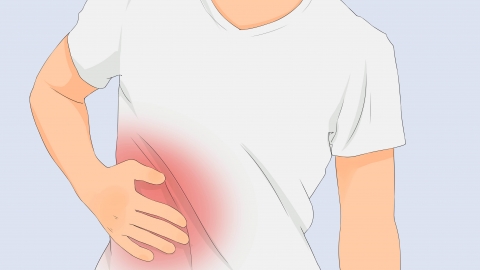What are the symptoms of ascites in liver cancer?
Under normal circumstances, the main symptoms of ascites caused by liver cancer include abdominal distension, bloating, lower limb edema, difficulty breathing, and loss of appetite. If any discomfort occurs, it is recommended to seek timely medical evaluation and treatment at a正规 hospital. Specific analysis is as follows:
1. Abdominal Distension
Liver cancer impairs liver function and increases portal venous pressure, leading to increased fluid production and reduced drainage in the abdominal cavity. Fluid accumulation causes gradual abdominal swelling. The abdomen visibly enlarges and feels soft upon palpation, with a fluctuant sensation indicating fluid presence. In severe cases, the abdominal shape may resemble that of a frog's belly.

2. Bloating
Large volumes of fluid in the abdominal cavity compress the gastrointestinal tract and disrupt normal peristalsis, causing gastrointestinal dysfunction and resulting in bloating. Patients often feel fullness and discomfort in the abdomen; even small meals can worsen the bloating. Some individuals may also experience mild abdominal pain.
3. Lower Limb Edema
When liver cancer is accompanied by ascites, portal hypertension interferes with systemic blood circulation, obstructing venous return in the lower limbs. Additionally, hypoalbuminemia exacerbates fluid accumulation in tissue spaces, leading to lower limb edema. Swelling typically appears around the ankles and lower legs, leaving an indentation when pressed (pitting edema). Symptoms become more pronounced after prolonged standing or walking.
4. Difficulty Breathing
Large-volume ascites increases intra-abdominal pressure, pushing upward against the diaphragm. This reduces thoracic cavity volume and limits lung expansion, impairing gas exchange and causing shortness of breath. Symptoms worsen when lying flat, often requiring patients to sit up or assume a semi-reclining position for relief. Breathlessness and chest tightness may also occur after physical activity.
5. Loss of Appetite
Ascites compresses the gastrointestinal tract, reducing digestive secretions, while impaired liver function decreases synthesis of digestive enzymes. These factors together hinder digestion and absorption of food, leading to reduced appetite. Patients lose interest in food, eat significantly less, and over time may experience weight loss and fatigue.
If any of the above symptoms are noticed, prompt medical consultation is advised to assess the severity of ascites. Daily management should include restricting salt and fluid intake to prevent worsening of fluid and sodium retention; wearing loose clothing to reduce pressure on the abdomen and lower limbs; getting adequate bed rest and avoiding strenuous activities; and regularly monitoring body weight and abdominal girth to assist doctors in evaluating treatment response.




